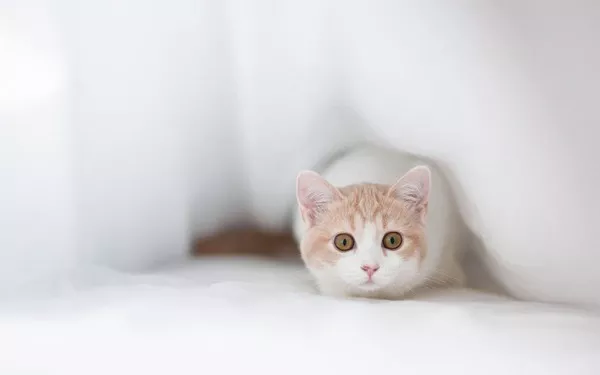The Cornish Rex cat breed, known for its distinctive curly coat and affectionate nature, often raises questions about its reproductive characteristics, particularly concerning litter size. Breeding enthusiasts, veterinarians, and cat lovers alike seek to understand the factors influencing the number of kittens a Cornish Rex can have in a single litter. This article delves into the intricacies of Cornish Rex reproduction, exploring genetic, environmental, and physiological aspects that impact litter size.
Cornish Rex Reproductive Biology
To comprehend the potential litter size of Cornish Rex cats, it’s essential to grasp their reproductive biology. Like other domestic cat breeds, Cornish Rex cats are polyestrous, meaning they can go into heat multiple times a year, typically starting around six months of age. During estrus, female cats exhibit receptive behavior and are capable of mating.
The mating process involves the male cat (tom) mounting the female (queen) and copulating. Successful mating triggers ovulation in the queen, leading to the release of mature eggs for fertilization. Once fertilized, the embryos implant in the queen’s uterus, initiating pregnancy.
Factors Influencing Litter Size
Genetic Factors:
Inherited traits play a significant role in determining litter size in Cornish Rex cats. Breeding pairs with genetic predispositions to larger or smaller litters may pass on these traits to their offspring.
Breeders often select mating pairs based on their lineage and previous reproductive performance to optimize litter size and health.
Age of the Queen:
The age of the female cat can influence her reproductive capacity. Younger queens may have smaller litters during their initial breeding cycles, while mature queens typically produce larger litters.
Fertility tends to peak between two to five years of age, with queens in this age range more likely to have larger litters compared to younger or older counterparts.
Health and Nutrition:
The overall health and nutritional status of the queen significantly impact her ability to conceive and carry kittens to term. Adequate nutrition, including essential vitamins, minerals, and proteins, supports reproductive function.
Queens with underlying health conditions or poor nutritional status may experience reduced fertility and smaller litter sizes. Regular veterinary care and a balanced diet are crucial for optimal reproductive health.
Environmental Factors:
Environmental stressors can affect the reproductive behavior and fertility of Cornish Rex cats. Changes in living conditions, exposure to toxins, and high levels of stress may disrupt normal reproductive cycles.
Providing a stable and stress-free environment for breeding cats can enhance reproductive success and increase the likelihood of larger litter sizes.
Breeding Practices:
Breeding practices employed by cat breeders can influence litter size outcomes. Careful selection of mating pairs based on genetic compatibility, health, and temperament can yield larger, healthier litters.
Breeding programs that prioritize the welfare of both the queen and the kittens contribute to optimal reproductive outcomes and overall breed health.
Case Studies and Observations
Breeding Pair Selection:
A breeder selects a two-year-old Cornish Rex queen with a history of producing large litters and pairs her with a proven tom of similar age and genetic background.
See Also:Should You Bathe Cornish Rex?
Despite optimal breeding conditions and genetic predispositions, the queen delivers a smaller-than-expected litter of three kittens. Further investigation reveals the presence of uterine abnormalities, contributing to reduced litter size.
Nutritional Intervention:
A three-year-old Cornish Rex queen experiences consecutive litters with declining litter sizes, raising concerns about her reproductive health.
After consulting with a veterinarian, the breeder implements a specialized nutritional plan designed to address potential deficiencies.
Subsequent litters show improvement, with the queen delivering larger, healthier kittens, indicating the significant impact of nutrition on reproductive performance.
Environmental Influence:
A breeding cattery undergoes renovations, disrupting the usual living conditions of resident Cornish Rex cats.
Breeding females exhibit signs of stress, including irregular estrus cycles and reduced fertility rates.
Once the environmental disturbances are addressed and stability restored, breeding females resume normal reproductive behaviors, resulting in larger litter sizes.
Conclusion
Understanding the factors influencing the litter size of Cornish Rex cats requires a multifaceted approach encompassing genetics, environmental influences, and reproductive health. While genetic predispositions and breeding practices play crucial roles, environmental factors, nutritional status, and overall health also significantly impact litter size outcomes.
By considering these factors and implementing best practices in breeding and cat care, breeders and cat enthusiasts can optimize reproductive success and contribute to the health and vitality of the Cornish Rex breed. Through ongoing research and collaboration within the feline community, we continue to expand our knowledge and improve breeding practices for the betterment of all cat breeds, including the beloved Cornish Rex.
Related Topics:
























